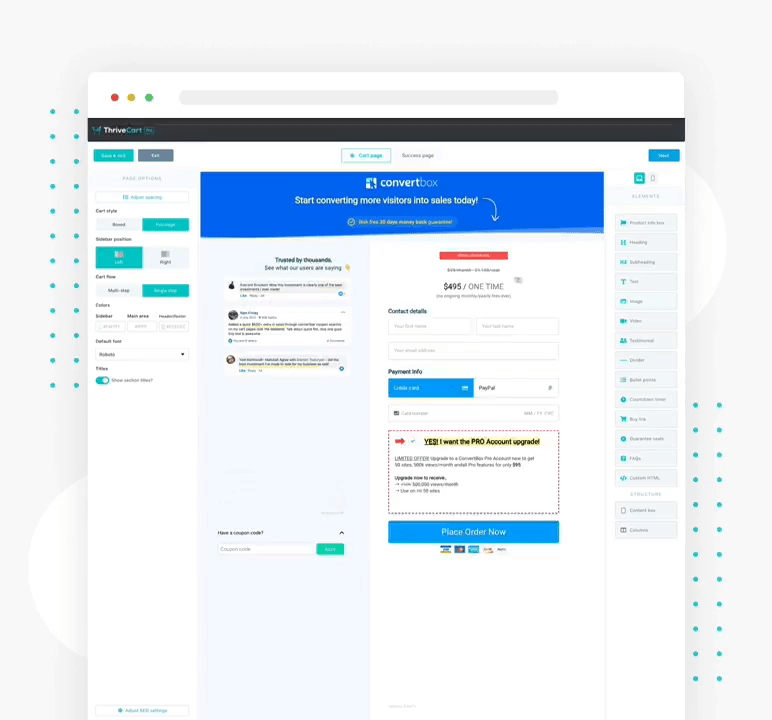Imagine browsing an online store, eyeing that perfect pair of shoes, but suddenly getting sidetracked and closing the tab. Days later, while scrolling through your Facebook feed, you notice an ad showcasing those exact shoes. How did they know? That, my friend, is the power of retargeting pixels. In this informative article, we will explore the concept of retargeting pixels, unraveling their mystery and shedding light on how they work. So, if you’ve ever wondered how your favorite online platforms seem to read your mind, grab a cup of coffee and prepare to dive into the fascinating world of retargeting pixels.
What is a Retargeting Pixel?
Definition
A retargeting pixel is a small piece of code that is placed on a website to track the actions of visitors and display targeted advertisements to them later on. It works by capturing information about the specific products or pages that users interact with and then delivering ads related to their interests or previous actions.
How it Works
When a visitor lands on a website, the retargeting pixel code is loaded, and a unique identifier, called a cookie, is assigned to that user. This cookie enables the website to track the user’s browsing behavior and actions on the site. As the user moves across the web, the retargeting pixel collects data on their interactions with other websites and platforms that have partnered with the retargeting provider.
Based on the data collected, the retargeting provider can then serve customized ads to the user when they visit other websites or social media platforms that are part of the retargeting network. These ads are designed to remind and entice the user to return to the original website and complete a desired action, such as making a purchase or filling out a form.
Benefits of Using Retargeting Pixels
Using retargeting pixels provides several benefits for businesses. Firstly, it helps to increase brand visibility and awareness by keeping the business in the forefront of the user’s mind through personalized ad campaigns. This increased visibility can lead to higher engagement and ultimately more conversions.
Retargeting pixels also allow businesses to reach users at different stages of the customer journey. By tracking specific actions taken on the website, such as adding products to a cart or signing up for a newsletter, businesses can tailor their ads to match the user’s level of interest and guide them towards making a purchase.
Furthermore, retargeting pixels provide valuable insights into user behavior and preferences. By analyzing the data gathered from the pixel, businesses can gain a deeper understanding of their target audience, identify trends, and make data-driven decisions to optimize their marketing strategies.

Different Types of Retargeting Pixels
There are various types of retargeting pixels that businesses can utilize based on their specific advertising goals. Some common types include:
- Standard Retargeting Pixels: These pixels track general website visits and actions, allowing businesses to retarget their advertisements to all visitors who have interacted with their site.
- Dynamic Retargeting Pixels: Dynamic pixels enable businesses to show personalized ads featuring specific products or services that the user has viewed or shown interest in.
- Segmented Retargeting Pixels: Segmented pixels allow businesses to group users based on specific criteria, such as the pages they have visited or the actions they have taken. This allows for more targeted and personalized ad campaigns.
- Cross-Device Retargeting Pixels: Cross-device pixels track user behavior and actions across multiple devices, ensuring that ads are delivered consistently regardless of the device the user is using.
- Lookalike Audience Retargeting: This type of retargeting pixel helps businesses identify and target new users who share similar characteristics and behaviors to their existing customers. This can expand the reach of their advertising campaigns and attract new potential customers.
Overall, the choice of retargeting pixel depends on the specific goals and requirements of the business, as well as the platforms and advertising networks they plan to leverage.
Setting up a Retargeting Pixel
Choosing a Platform
Before setting up a retargeting pixel, it is essential to choose a retargeting platform that aligns with the business’s advertising goals and target audience. There are several popular retargeting platforms available, including Google Ads, Facebook Ads, Twitter Ads, and LinkedIn Ads. Each platform offers its own set of features and targeting options, so businesses should evaluate their needs and select the platform that best suits their requirements.
Creating a Pixel
Once a retargeting platform is chosen, the next step is to create a retargeting pixel. Each platform has its own process for creating a pixel, and businesses can typically find detailed instructions in the platform’s advertising interface or help documentation. The creation of a pixel often involves providing basic information about the campaign, such as the desired audience and ad objectives.
Installing the Pixel on Your Website
After the pixel is created, it needs to be installed on the business’s website. This is usually achieved by inserting the pixel code into the website’s HTML or through the use of a tag manager like Google Tag Manager. The pixel code should be placed in the header or footer section of every page of the website to ensure proper tracking of user actions.
Ensuring the Pixel is Firing Correctly
Once the pixel is installed, it is crucial to verify that it is firing correctly and tracking user actions accurately. This can be done by using the platform’s debugging or testing tools, which provide real-time feedback on whether the pixel is functioning as intended. Additionally, businesses should regularly check and monitor the tracking data to ensure that the pixel is collecting the desired information and delivering accurate insights.
Ensuring the correct installation and proper functioning of the retargeting pixel is vital for the success of retargeting campaigns. By taking the time to set up the pixel correctly, businesses can maximize the effectiveness of their retargeting efforts.
Retargeting Pixel Strategies
Basic Retargeting
Basic retargeting involves targeting users who have interacted with a website but have not yet converted into customers. This strategy aims to re-engage these potential customers by displaying relevant ads based on their previous actions. For example, if a user abandons their shopping cart, a basic retargeting strategy would display ads reminding them of the items they left behind and offering incentives to complete the purchase.
Dynamic Retargeting
Dynamic retargeting takes basic retargeting to the next level by displaying highly personalized ads featuring the exact products or services that the user has viewed or shown interest in. This strategy leverages the data collected by the retargeting pixel to create dynamic product ads that are tailored to each user’s preferences. By showcasing products that are directly relevant to the user, businesses can significantly increase the chances of conversion and drive higher revenue.
Segmented Retargeting
Segmented retargeting involves dividing users into different segments based on their actions or characteristics. This allows businesses to deliver more targeted and relevant ads to each segment. For example, a clothing retailer may segment their audience based on the gender or browsing history of the users. They can then create separate ad campaigns with tailored messaging and products for each segment, increasing the likelihood of generating conversions.
Cross-Device Retargeting
Cross-device retargeting aims to reach users on multiple devices, ensuring a consistent and seamless experience across platforms. By tracking user behavior and actions across devices, businesses can deliver relevant ads regardless of whether the user is browsing on their smartphone, tablet, or desktop computer. This strategy helps to increase brand recognition and maintain engagement throughout the customer journey, ultimately driving more conversions.

Lookalike Audience Retargeting
Lookalike audience retargeting involves targeting users who share characteristics and behaviors similar to existing customers. By analyzing the data collected by the retargeting pixel, businesses can identify patterns and create lookalike audience segments. These segments can then be targeted with advertisements, expanding the reach of the campaigns and potentially attracting new customers who are likely to be interested in the business’s offerings.
Implementing a combination of these retargeting strategies can significantly enhance the effectiveness of advertising campaigns and improve overall ROI.
Tracking and Analyzing Retargeting Pixel Data
Understanding Basic Metrics
Retargeting pixel data provides valuable insights into the performance and effectiveness of advertising campaigns. Understanding basic metrics is essential for evaluating the success of retargeting efforts. Some common metrics to consider include:
- Impressions: The number of times the ad was displayed to users.
- Clicks: The number of users who clicked on the ad.
- Click-through Rate (CTR): The percentage of users who clicked on the ad out of the total impressions.
- Conversion Rate: The percentage of users who completed a desired action, such as making a purchase or filling out a form, after clicking on the ad.
- Cost per Acquisition (CPA): The average cost required to acquire a new customer.
By analyzing these metrics, businesses can assess the performance of their retargeting campaigns, identify areas for improvement, and make data-driven decisions to optimize future strategies.
Conversion Tracking
Conversion tracking is a critical component of analyzing retargeting pixel data. By setting up conversion tracking, businesses can monitor and attribute specific actions to their retargeting efforts. For example, if the objective of the retargeting campaign is to drive online sales, conversion tracking can provide insights into the number of purchases made by users who were exposed to the retargeted ads. This information allows businesses to accurately calculate the ROI of their retargeting campaigns and measure the effectiveness of their advertising spend.
A/B Testing
A/B testing involves comparing two or more variations of an ad or landing page to determine which performs better. By conducting A/B tests on retargeting ads, businesses can identify the most effective ad creative, messaging, and call-to-action for different segments of their audience. This iterative testing process can significantly improve the performance of retargeting campaigns over time.
Attribution Modeling
Attribution modeling refers to the process of assigning credit to different marketing touchpoints along the customer journey. Retargeting pixels play a crucial role in attribution modeling by capturing the actions users take after being exposed to retargeted ads. By analyzing this data, businesses can gain insights into the most influential touchpoints and optimize their marketing strategies accordingly. Attribution modeling helps businesses understand the true impact of retargeting efforts on generating conversions and can inform decisions about ad spend allocation.
Tracking and analyzing retargeting pixel data is an ongoing process that requires continuous monitoring and adjustment. By leveraging the insights gained from this analysis, businesses can refine their strategies and maximize the success of their retargeting campaigns.
Best Practices for Using Retargeting Pixels
Setting a Frequency Cap
Setting a frequency cap is essential to avoid ad fatigue and ensure that users are not overwhelmed by excessive ads. It limits the number of times an ad is shown to a user within a specified time period. By setting an optimal frequency cap, businesses can strike a balance between maintaining brand visibility and avoiding irritation or banner blindness.
Creating Compelling Ad Creative
The ad creative plays a crucial role in attracting and retaining the attention of users. It is important to create visually appealing and engaging ads that align with the brand and resonate with the target audience. Using eye-catching images, clear and concise messaging, and strong call-to-action buttons can significantly improve the performance of retargeting ads.
Implementing Audience Segmentation
Segmenting the audience based on various criteria, such as demographics, interests, or past actions, allows for more targeted and relevant ad delivery. By tailoring the ad messaging and creative to specific audience segments, businesses can increase engagement and drive higher conversions. Regularly reviewing and refining audience segments based on data insights can further optimize retargeting campaigns.
Optimizing Landing Pages
The landing page is where users are directed after clicking on a retargeted ad. Optimizing landing pages for a seamless and personalized user experience is crucial for maximizing conversions. Businesses should ensure that the landing page content aligns with the ad messaging, is visually appealing, and provides a clear call-to-action. Additionally, implementing site speed optimization and mobile responsiveness can enhance the overall user experience and increase the likelihood of conversion.
Testing and Refining Your Campaigns
Continuously testing and refining retargeting campaigns is key to achieving optimal results. Experimenting with different ad variations, targeting parameters, and bidding strategies can reveal valuable insights and help businesses understand what works best for their audience. Regularly analyzing the performance metrics and making data-driven adjustments can significantly improve the effectiveness of retargeting efforts over time.
By incorporating these best practices into their retargeting strategies, businesses can enhance their ad campaigns, drive higher engagement, and ultimately achieve better conversion rates.
Common Challenges with Retargeting Pixels
Ad Fatigue
Ad fatigue occurs when users are repeatedly exposed to the same retargeted ads, leading to decreased interest and engagement. To combat ad fatigue, businesses should regularly refresh their ad creative and messaging to keep users interested and motivated to take action. Additionally, setting frequency caps and limiting the number of times a user sees an ad can help mitigate ad fatigue and maintain campaign effectiveness.
Audience Saturation
Audience saturation refers to the point where the retargeted ads have reached the maximum potential audience size and further exposure may yield diminishing returns. To address audience saturation, businesses should regularly update their retargeting lists to exclude users who have already converted or are no longer relevant. Moreover, expanding the reach through new targeting strategies, such as lookalike audience targeting, can help to reach new potential customers and overcome audience saturation.
Optimal Ad Frequency
Determining the optimal ad frequency depends on various factors, including the industry, target audience, and campaign objectives. It requires careful monitoring and analysis of user behavior and response to the retargeted ads. Experimenting with different ad frequencies and analyzing the corresponding performance metrics can help businesses find the sweet spot where the ad frequency generates maximum impact without negatively affecting the user experience.
Balancing Privacy Concerns
Retargeting pixels track user behavior and collect personal data, which can raise privacy concerns among users. It is essential for businesses to comply with privacy regulations and ensure transparent communication about data collection and usage. Providing users with clear opt-out options and implementing robust data protection measures can help build trust and mitigate privacy concerns.
Retargeting Pixel Tips for Different Industries
E-commerce
For e-commerce businesses, retargeting pixels can be a powerful tool to drive conversions and increase sales. Some tips for using retargeting pixels in the e-commerce industry include:
- Displaying retargeted ads showcasing the specific products a user has viewed or added to their cart.
- Offering personalized promotions or discounts to incentivize users to complete their purchases.
- Sending abandoned cart reminder emails with dynamic product recommendations based on the user’s browsing history.
Service-based Businesses
Service-based businesses, such as hotels, travel agencies, or professional services, can also benefit from retargeting pixels. Some tips for using retargeting pixels in the service-based industry include:
- Displaying retargeted ads highlighting specific services or promotions that align with the user’s previous interest or browsing behavior.
- Offering exclusive promotions or discounts for retargeted users to encourage them to book or inquire further about the services.
- Using dynamic content in retargeted ads to showcase reviews or testimonials from satisfied customers.
B2B Companies
Retargeting pixels can be effective for B2B companies by nurturing leads and driving conversions. Some tips for using retargeting pixels in the B2B industry include:
- Displaying retargeted ads that showcase the benefits and features of specific products or services relevant to the user’s industry or role.
- Offering content upgrades, such as whitepapers or case studies, in retargeted ads to capture leads and drive engagement.
- Using retargeting pixels to upsell or cross-sell complementary products or services to existing customers.
Local Businesses
Local businesses can leverage retargeting pixels to increase brand awareness and drive foot traffic to their physical locations. Some tips for using retargeting pixels for local businesses include:
- Displaying retargeted ads with location-specific offers or promotions to entice users to visit the physical store.
- Using geotargeting to deliver ads to users in specific geographic areas surrounding the business’s location.
- Encouraging users to sign up for newsletters or loyalty programs through retargeted ads to establish ongoing communication and drive repeat visits.
Retargeting Pixels vs. Cookies: What’s the Difference?
Overview of Cookies
Cookies are small text files that are stored on a user’s device when they visit a website. They contain information about the user’s browsing behavior and preferences, allowing websites to remember certain settings or provide a more personalized experience. While retargeting pixels and cookies serve similar purposes, there are some key differences:
- Size: Retargeting pixels are typically smaller in size compared to cookies, as they only contain the necessary code to track user actions and deliver ads. Cookies can contain more extensive information, such as login credentials or shopping cart contents.
- Functionality: Retargeting pixels are specifically designed for tracking user behavior and delivering targeted ads based on that behavior. Cookies, on the other hand, have a broader range of functions and can be used for various purposes, such as remembering user preferences or saving items in a shopping cart.
- Ownership: Retargeting pixels are placed on a website by the business or advertising platform, which retains control and ownership of the data collected. Cookies, on the other hand, are primarily owned by the website or third-party service that sets them.
- Persistence: Retargeting pixels are persistent and remain active as long as the code remains on the website. Cookies, however, can have varying expiration periods, ranging from a few minutes to years, depending on how they are set.
Advantages and Disadvantages of Retargeting Pixels and Cookies
Retargeting pixels offer several advantages over cookies when it comes to delivering targeted ads. They provide more accurate and real-time tracking of user behavior, enabling businesses to deliver highly relevant advertisements. Retargeting pixels also have a higher level of control over the data collected, as it remains within the advertising platform’s ecosystem.
On the other hand, cookies have been widely used for tracking and personalization purposes for many years. They are more widely supported across different websites and browsers, making them more accessible for businesses. However, cookies have limitations when it comes to cross-device tracking and accurate attribution.
Complementary Use Cases
Retargeting pixels and cookies are not mutually exclusive but can be used in combination to enhance the effectiveness of advertising campaigns. By leveraging the strengths of both technologies, businesses can create a comprehensive and personalized user experience.
For example, retargeting pixels can track user behavior on specific websites and platforms, allowing for highly targeted ad delivery. Once a user engages with an ad and visits the website, cookies can be used to remember their preferences and deliver a seamless browsing experience. This combined approach enables personalized retargeting while maintaining a consistent experience across devices and sessions.
Ultimately, the choice between retargeting pixels and cookies depends on the specific goals and requirements of the business, as well as the platforms and technologies they are utilizing.
Using Retargeting Pixels for Social Media Advertising
Facebook Pixel
The Facebook Pixel is a powerful retargeting tool that allows businesses to track user interactions on their website and deliver targeted ads on the Facebook platform. Some benefits of using the Facebook Pixel for retargeting include:
- Building custom audiences based on user behavior or specific actions taken on the website.
- Optimizing ad delivery to reach users who are most likely to convert or take a desired action.
- Tracking conversions and attributing them to specific ad campaigns, enabling accurate measurement of ROI.
Twitter Pixel
Similar to the Facebook Pixel, the Twitter Pixel enables businesses to track user interactions and deliver targeted ads on the Twitter platform. Key features of the Twitter Pixel include:
- Creating custom audiences based on user behavior and retargeting them with relevant ads.
- Tracking conversions and attributing them to specific ad campaigns to measure the effectiveness of Twitter advertising efforts.
- Implementing event tracking to monitor specific actions on the website, such as sign-ups or purchases, and use that data for retargeting purposes.
LinkedIn Insights Tag
The LinkedIn Insights Tag is a retargeting tool provided by LinkedIn that allows businesses to track user interactions on their websites and run targeted ad campaigns on the LinkedIn platform. Some benefits of using the LinkedIn Insights Tag include:
- Building custom audiences based on user behavior and targeting them with ads on LinkedIn.
- Tracking conversions and attributing them to specific LinkedIn ads, enabling businesses to measure the impact of their advertising efforts.
- Leveraging advanced segmentation options to target specific professional audiences based on job titles, industries, or company sizes.
By utilizing retargeting pixels on social media platforms, businesses can expand their reach, engage with their target audience, and increase the effectiveness of their social media advertising campaigns.
Measuring the Success of Retargeting Campaigns
ROI Calculation
Calculating the return on investment (ROI) of retargeting campaigns is crucial for evaluating their effectiveness. The formula for calculating ROI is:
ROI = (Revenue – Cost) / Cost
To accurately measure ROI, businesses need to track and attribute conversions generated by their retargeting efforts. By subtracting the cost of the retargeting campaign from the revenue generated and dividing it by the cost, businesses can calculate the ROI percentage. Positive ROI indicates that the retargeting campaign has generated more revenue than the cost, while negative ROI suggests the campaign is not generating a profitable return.
Conversion Tracking
Conversion tracking is a core component of measuring the success of retargeting campaigns. By setting up conversion tracking, businesses can monitor the number of conversions generated from retargeted users. This allows them to evaluate the impact and effectiveness of their retargeting efforts and make data-driven decisions to optimize future campaigns.
Some common conversion types that businesses may track include purchases, form submissions, newsletter sign-ups, or other desired user actions. By tracking conversions, businesses can assess the performance of different ad variations, adjust targeting parameters, and improve their overall strategy.
Attribution Modeling
Attribution modeling is used to assign credit to different marketing touchpoints along the customer journey. In the context of retargeting campaigns, attribution modeling helps businesses understand the impact of retargeted ads on conversions and allocate resources accordingly.
There are various attribution models that businesses can use, such as first-click attribution, last-click attribution, or multi-touch attribution. Each model attributes the conversion to a different touchpoint or sequence of touchpoints. By analyzing the data and insights provided by the retargeting pixels, businesses can identify the most influential touchpoint(s) and adjust their marketing strategies to optimize conversion rates.
Measuring the success of retargeting campaigns requires careful monitoring of key metrics and attribution analysis. By regularly analyzing ROI, tracking conversions, and implementing effective attribution models, businesses can assess the true impact of their retargeting efforts and optimize their advertising strategies accordingly.





